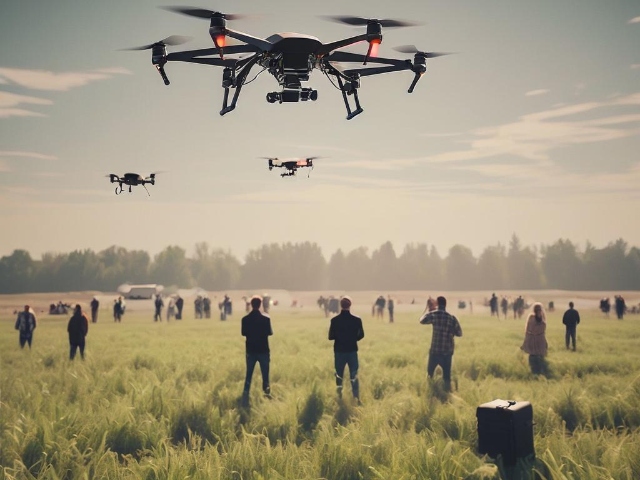
-
‘Just A Game’ – These Scientists Built An AI Drone That Can Hunt And Kill People
08 Mar 2024 by Tayla in Lifestyle, Tech/Sci, Video
[imagesource:gencraftai]
At least these scientists are being transparent and responsible with the terrifying tech that they’re capable of building, warning us all how easy it is to configure a small, commercially available drone to hunt down a target by itself.
Luis Wenus, an entrepreneur and engineer, incorporated an artificial intelligence (AI) system into a small drone to chase people around “as a game,” he wrote in a post on X. But then he realised it could easily be configured to contain an explosive payload.
Collaborating with Robert Lukoszko, another engineer, he configured the drone to use an object-detection model to find people and fly toward them at full speed, he said. The guys also built facial recognition into the drone that works at a range of up to 10 meters, which means a weaponised version of the drone could be used to attack a specific person or set of targets.
“This literally took just a few hours to build, and made me realize how scary it is,” Wenus wrote. “You could easily strap a small amount of explosives on these and let 100’s of them fly around. We check for bombs and guns but THERE ARE NO ANTI-DRONE SYSTEMS FOR BIG EVENTS & PUBLIC SPACES YET.”
Good lord, what have we done?
we built an AI-controlled homing/killer drone — full video pic.twitter.com/xJVlkswKaq
— Luis Wenus (@luiswenus) March 2, 2024
The engineers basically also warned that a terror attack could play out in the near future using this kind of technology. While people need technical knowledge to engineer such a system, it will become easier and easier to write the software as time passes, partially due to advancements in AI as an assistant in writing code, he noted.
So, this is how we all die? Take me to a forest and cover me in green, muddy moss right now, please. I’m not ready to get go down thanks to the games of a man whose name sounds like the slang word for the excess or loose skin at the joint of one’s elbow.
Wenus emphasised the importance of developing anti-drone systems for civilian areas where large crowds may assemble, citing his experiment. Robin Radar suggests various countermeasures society can implement, including cameras, acoustic sensors, and radar for drone detection. However, effectively neutralising drones might necessitate technologies like radio frequency jammers, GPS spoofers, net guns, and high-energy lasers.
While these weapons haven’t been utilised in civilian settings, they have been previously conceptualised and employed in warfare scenarios. For instance, Ukraine has reportedly developed explosive drones in response to Russia’s invasion, as reported by the Wall Street Journal (WSJ).
The US military is actively researching methods to construct and manage swarms of small drones capable of engaging targets, too. This initiative builds upon the Navy’s advancements since its initial demonstration of controlling a swarm of 30 explosive-equipped drones in 2017, as reported by MIT Technology Review.
Just great.
[source:livescience]
Latest News
-
Thai Woman Sentenced To Death For Murdering 14 Friends With Cyanide In Shocking Killing Spree
[imagesource: Sararat Rangsiwuthaporn] A woman in Thailand, dubbed 'Am Cyanide' by Thai...
-
René Magritte Painting Sells For Record R2.1 Billion At Auction
[imagesource:renemagritte.org] A René Magritte painting portraying an eerily lighted s...
-
Brave Rape Survivor Alison Botha Faces New Challenge After Brain Surgery
[imagesource: Alison Botha] Gqeberha rape survivor Alison Botha, a beacon of resilience...
-
Get Ready For The Mother of All Celebrations As MCQP Turns 30
[imagesource:mcqp/facebook] Clutch your pearls for South Africa’s favourite LGBTQIA+ ce...
-
The Iconic Good Hope Centre Is Set For Redevelopment
[imagesource:capetown.gov] The City of Cape Town’s Mayoral Committee has approved the...
-






























